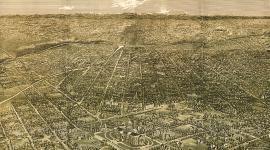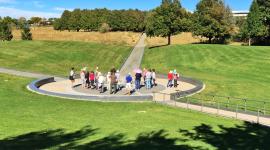Landscape Information
Among the earliest in Denver, this neighborhood northeast of downtown was developed between 1885 and 1890. Developer Samuel Curtis offered residents relief from the industrializing city center, in part through the establishment of a small park (now Mestizo-Curtis Park) in 1868. Three years later, the suburb was connected to downtown with the opening of a horse-drawn streetcar line. From the downtown retail shops at 16th Street to its terminus in Curtis Park at 27th Street, this line followed the dirt path that would become Champa Street. The community experienced an influx of diverse residents, ranging from socially elite businessmen to school teachers and blacksmiths. As a result, the architectural styles of the residences lining Champa, Curtis, California, and Stout Streets varied widely, from Victorian mansions to one-story cottages.
With the Silver Crash of 1893, many of Curtis Park’s residents suffered economic hardship. As the elite moved away, their ornate and expansive homes were transformed into boarding houses. Throughout the first half of the twentieth century, African Americans who moved into the neighborhood were joined by immigrants from Mexico and, later, Japan. Many historic homes were demolished and replaced with low-income public housing in the 1940s and 1950s. Despite the changes, the district was listed in the National Register of Historic Places in 1975, with its boundaries expanded in 1983. Today, generous setbacks, mature trees, and a diverse mix of architectural styles characterize the neighborhood, which is benefiting from reinvestment. Throughout Curtis Park, the neighborhood of more than 500 historic dwellings is complemented by contemporary multi-family units, churches, restaurants, and commercial development.

















